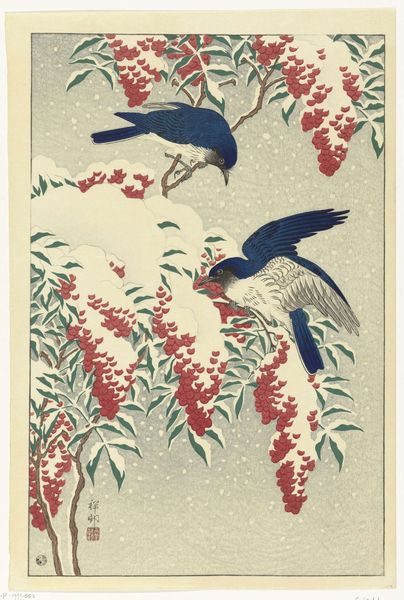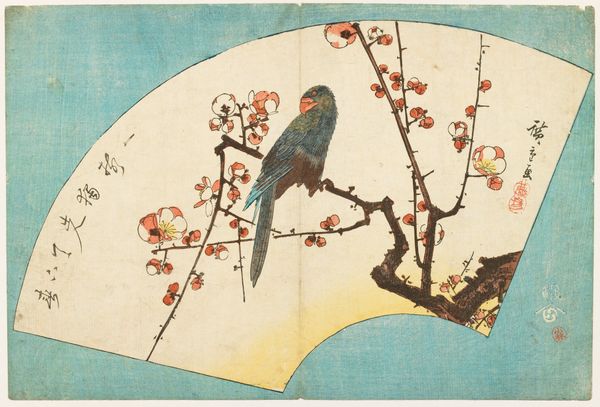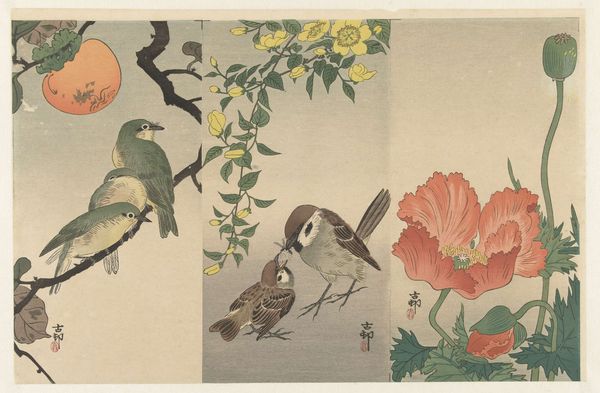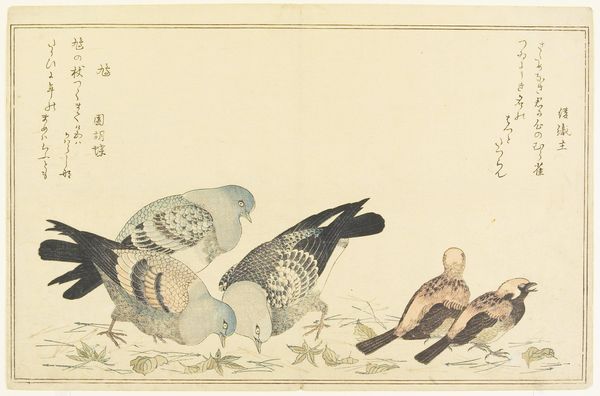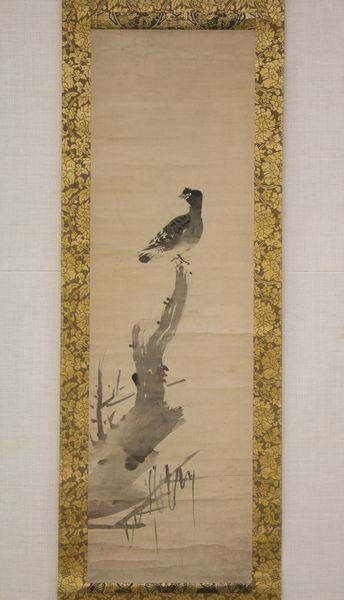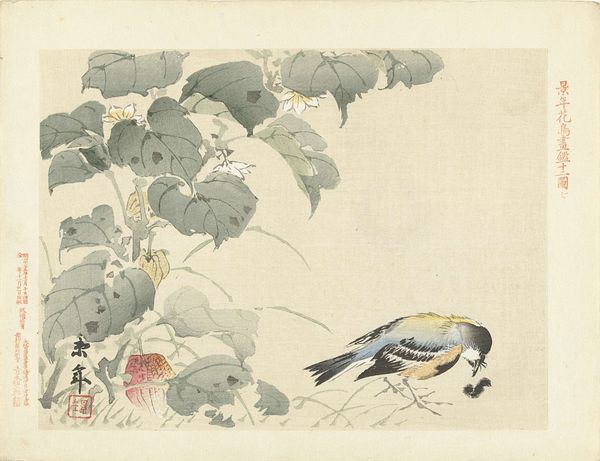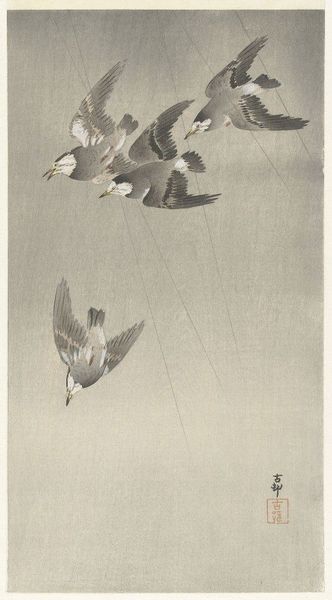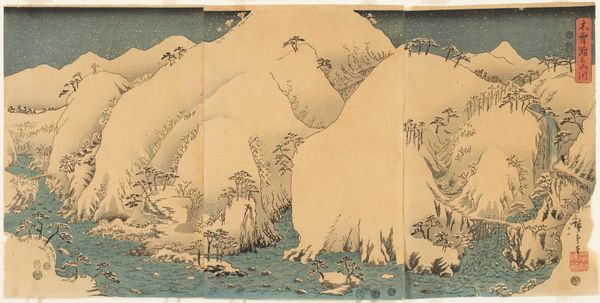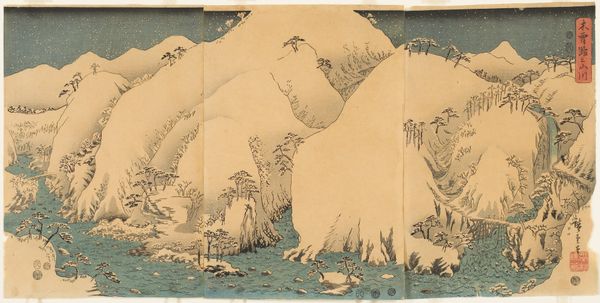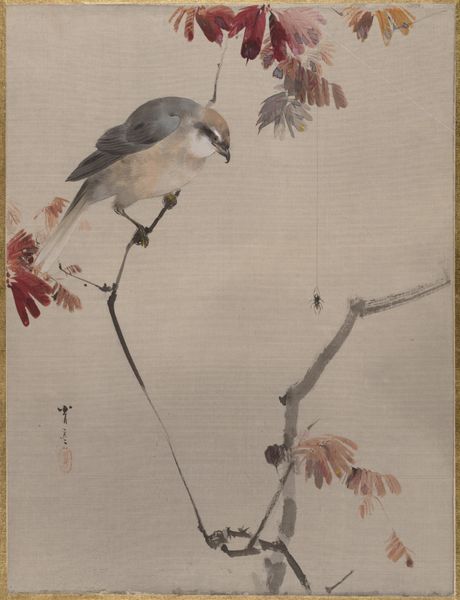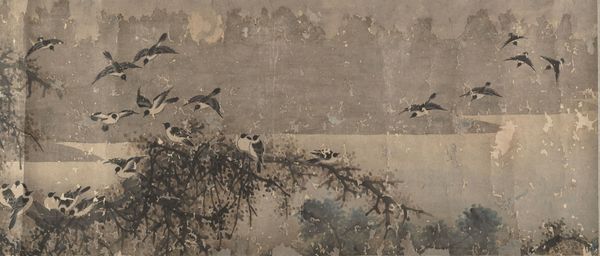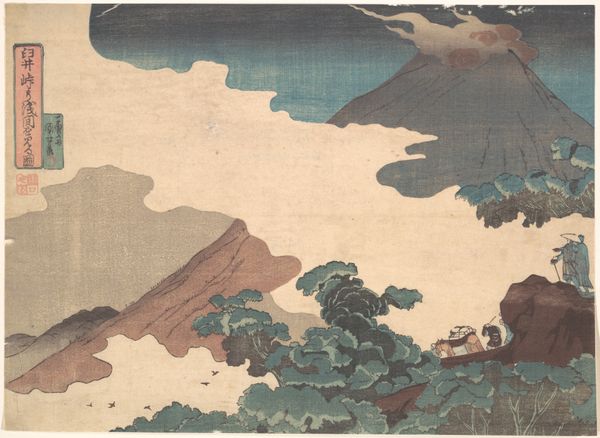
print, woodblock-print
# print
#
asian-art
#
bird
#
flower
#
ukiyo-e
#
japan
#
woodblock-print
Dimensions: H. 14 3/16 in. (36 cm); W. 8 13/16 in. (22.4 cm)
Copyright: Public Domain
Curator: This woodblock print, "Birds and Flowers," was crafted by Keisai Eisen sometime between 1790 and 1848. Editor: My first thought? There’s a certain breezy elegance to it, almost a musicality in the way the birds and branches are arranged. It's not just pretty; it vibrates with life. Curator: Eisen, who specialized in Ukiyo-e prints, a popular art form in Japan during the Edo period, often explored fleeting beauty, capturing ephemeral moments in nature and the everyday life around him. The materiality of the print itself also speaks volumes—the delicate paper, the layers of ink… Editor: It feels like catching a stolen glance—that sudden flash of color and movement you glimpse in your own garden. Look at how the texture of the tree trunk anchors the entire scene, even against the birds on those improbable fruits. I feel grounded yet free, like the world's opening its secrets. Curator: What I find compelling is the process. These woodblock prints were incredibly labor-intensive, requiring skilled artisans to carve each color layer separately, then meticulously press them onto the paper. Think about the economics behind that, the distribution networks...it wasn't just art, it was a small industry. Editor: Knowing that almost changes the feel of it. It’s not just a whimsical scene anymore; it’s the product of a careful and clever hand—a reminder that beauty, even in something as fragile as a print, takes work and dedication. Like an open-air atelier where the subject and creator can almost occupy the same plane, to offer the outside to all, it also welcomes a glimpse inward. Curator: Absolutely, the act of reproducing it transforms it from an individual experience into a commodity, ready for the market, accessible to many, reshaping how nature itself is valued. It reflects shifts in urban life and economic changes in Japan at the time. Editor: And seeing that woven into this delicate scene, well, it only makes the transient nature of the blossom and the brief existence of the birds seem even more precious.
Comments
No comments
Be the first to comment and join the conversation on the ultimate creative platform.
